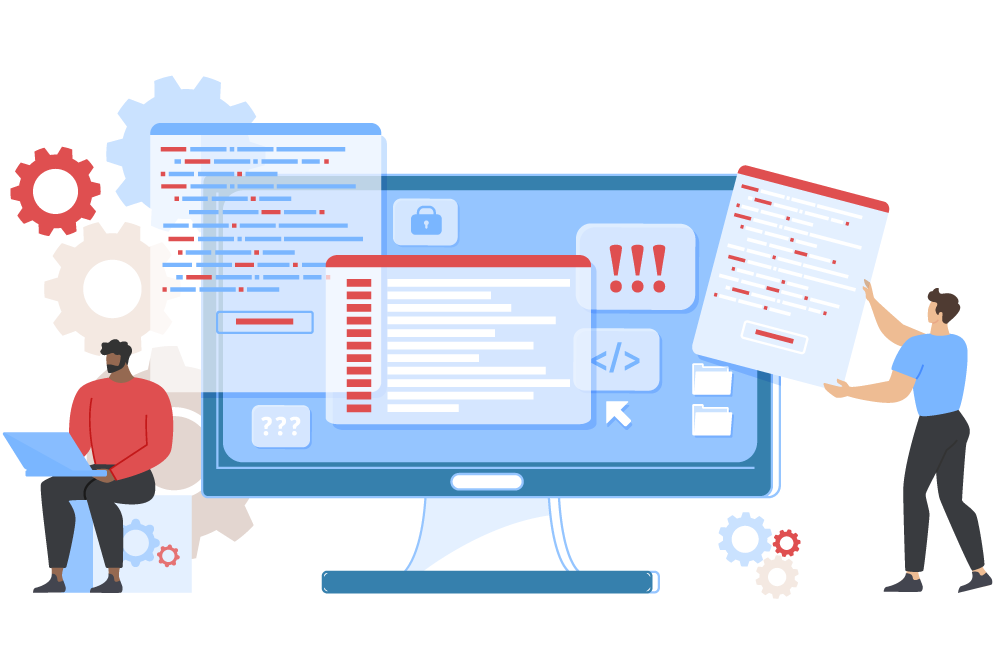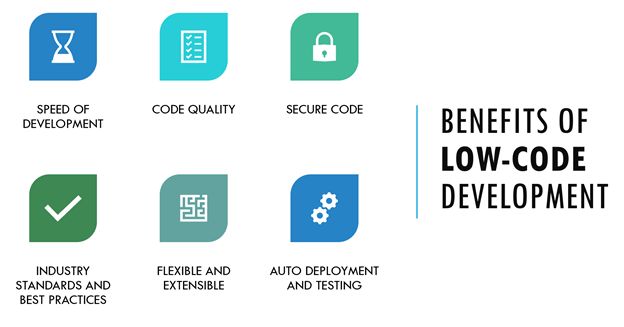Good Reasons For Selecting Legacy application modernization with Low-code
Good Reasons For Selecting Legacy application modernization with Low-code
Blog Article
In Terms Of Integration Capabilities, Low-Code Development Of Applications Has Numerous Advantages.
Low-code development of applications offers huge advantages in the area of integration capabilities. These are crucial for building applications that are able to seamlessly connect to various systems and services. Here are some benefits of APIs and connectors that are pre-built:
Connectors that are wide-ranging Low-code platforms include a large collection of pre-built connectors to common enterprise systems (e.g. ERP, CRM databases, cloud services). The process of integrating these systems is made simpler.
API Integration: A lot of platforms have built-in API integration capabilities. This allows developers to effortlessly connect with data from other sources and services.
Usability:
Drag-and Drop Integration: Many integration tasks can be accomplished with drag-and-drop interfaces. This allows developers and non-developers to build complicated integrations with minimal or no code.
Visual Workflow Designers: These software tools aid you in understanding and configuring integrations more easily.
Standardized Integration Methods:
SOAP and Restful Services: Supporting standard web service protocols such as SOAP and REST makes it easy to integrate external systems and applications.
OData Standards: OData standards permit the simple manipulation and retrieval of data across a variety of platforms and applications.
Real-Time Data Synchronization:
Real-Time Integrations: Low-code platforms can handle real-time data transfer between systems and applications. This makes sure that the information is current and consistent across the entire organization.
Event-Driven Architecture: Certain platforms come with event-driven architectural designs which allow applications to react in real-time, to events essential for interactive, dynamic applications.
Legacy System Integration:
Low-code platforms offer a variety of tools to connect with existing systems. They let organizations modernize IT without having to overhaul their existing systems.
Data Migration Tools Built-in data migration tools make it easy to transfer data from older systems to low-code applications.
Integration of Third-Party Services:
Cloud Services: Integration with cloud services including AWS Azure and Google Cloud allows easy deployment and scaling.
Business Applications Integration: Lowcode platforms can be utilized to connect various business applications, such as Salesforce, SAP, Microsoft Dynamics etc., creating a cohesive workflow among different business functions.
Simple Data Management:
Unified Data Models - Some low-code platforms provide unification of data models that make data management easier and integration between different systems.
Data connectors: Preconfigured data connectors provide easy access and manipulation to data from multiple sources.
Security and compliance
Low-code platforms help ensure integrations are compliant with security protocols and standards, protecting data in transit as well as in rest.
The platforms come with features that make sure that the integrations are in compliance with the regulatory standards.
Extensibility:
Low-code platforms are able to accommodate complex integration needs by including custom scripts or code. They offer flexibility without compromising their user-friendliness.
Plug-in Ecosystem A collection of plugins and extensions that can further extend the integration capabilities that allow users to include new functions as needed.
Overall, the integration capabilities of low-code application development platforms make them an effective device for building efficient, interconnected and scalable apps. These platforms simplify the process of integrating different IT systems, boost data flow, and help companies adopt technologies that are already in use, while also leveraging new ones. View the best Low-code Platform for application development for site info including cross platform app dev, sso azure, application modernization software, rapid applications, rad development, multiplatform mobile app development, azure sql server, app development platform, build with docker, application modernization and more.
Benefits Of Low-Code Application Development In Terms Of Scalability And Flexible
Low-code applications offer several advantages when it comes to scalability. They are flexible and can be adjusted to accommodate new needs. Here are a few of the main advantages.
Cloud-based deployment: A lot of low-code platforms are cloud dependent. This allows applications to expand seamlessly with the cloud infrastructure. This lets companies handle increasing loads without worrying over server management.
Auto-Scaling: The auto-scaling function allows you to automatically adjust resources according to the demands. This guarantees constant performance during peak times with no manual intervention.
Flexible Architecture:
Modular design Low-code platforms are excellent way to promote modular software. This lets components be developed independently, tested, scaled and so on. Modularity allows for greater flexibility, and makes it easier to update specific parts of an application without having to alter the whole system.
Microservices Integrate: Microservices enable applications to grow and become adaptable by allowing them to be constructed as a group of services that are loosely connected.
Customizable Solutions
Flexibility : Low-code platforms permit developers to extend functions beyond what they are able to provide. This allows companies to meet the requirements of their particular business.
Third-Party Integrations: The capacity to connect with third-party services and APIs enables companies to add additional functions and services and enhance the capabilities of the application.
Agile Development and Deployment:
Continuous Deployment and Delivery: Low-code platforms are able to support agile processes, allowing continuous deployment and integration (CI/CD). This allows for rapid deployment of new features and updates, while ensuring that the application can be updated quickly in response to user feedback and market shifts.
Iterative Development - The low-code model lets applications be improved and scaled incrementally which reduces risk and allows for more controlled growth.
Resource Optimization
Effective Resource Management Low Code platforms maximize resource utilization by using tools that track and control the performance of a program. This ensures resources are used efficiently and are scalable to meet actual needs.
Load Balance: This feature allows the application to handle the load of heavy traffic by spreading workloads across multiple servers. It also ensures that the application's performance is constant.
Global Reach
Multi-Region: Platform deployments that use low-code are often accessible across multiple countries, allowing businesses to provide users with low latency access to every user. This is especially important when it comes to applications that have an international user base.
Support for Localization: The built-in support of localization lets the software be easily adapted to different languages and requirements in different markets.
Updates and maintenance
Maintenance is easy by the visual nature and modularity of low-code applications makes maintenance easier, allowing for quick fixes and updates to be applied without lengthy downtime.
Version Control Version Control: Integrated version control systems help manage changes and rollbacks, ensuring that updates can be deployed safely and previous versions can be restored if required.
Cost Efficiency:
Low Development Costs. By reducing coding requirements, low-code platform platforms reduce the development cost and allow applications to scale up without increasing development efforts.
Pay-As you Go Models A lot of platforms for low-code users offer a variety of pricing options, like pay-as-you-go model that aligns costs and usage with actual growth.
Overall, the scalability and flexibility advantages of low-code application development let businesses build robust, adaptable and scalable apps efficiently. These platforms allow for quick adjustments to changing demands and efficient use of resources and constant improvement, which ensures that the application can expand and change in line with business needs. Take a look at the most popular Legacy application modernization with Low-code for site info including rapid application design, rad development, jdbc server, low code platforms, mobile development platforms, build with docker, cross platform mobile dev, application modernization software, mobile app development platforms, build with docker and more.
In Terms Of Support For Vendors And Community, Low-Code Applications Development Offers Many Benefits.
Low-code platforms have significant advantages in terms of community and vendor support Both of which are vital to successful implementation, maintenance and improvement of software. Support for Vendors
Comprehensive Technical Support:
Support Teams: Several Low-Code platforms provide access an experienced support team that assist with technical issues, guidance and troubleshooting.
24/7 Support Available: Certain vendors offer around-the-clock support which is particularly useful for businesses that operate globally and in various time zones.
Training and Onboarding:
Structured Training: Many vendors offer structured training, including webinars, tutorials, and certification courses that assist users to quickly get more comfortable with the platform.
Customized Onboarding : Many vendors offer customized onboarding services which assist new customers integrate the platform and tailor it to suit their particular requirements.
Regular Updates and enhancements:
Continuous Improvement : Low-code platform manufacturers often release regular updates that add new functionality as well as performance improvements and security patches. These updates ensure that their platform is up to date and secure.
Feedback integration: Vendors will frequently incorporate feedback from users during their development process to ensure that their platform can meet the ever-changing needs of the users.
Comprehensive Documentation:
User documentation in detail: Users can find answers to their problems by consulting the detailed and well-organized manual that covers all aspects of the program, from its basic functionality to more advanced customisation.
API References: API documentation is detailed and aids developers in integrating APIs with other platforms as well as modify their applications.
Professional Services and Consulting
Expert Consultation. Vendors offer a wide range of consulting services including architectural design along with strategic planning and platform implementations. They ensure that customers get the most out of their platform.
Custom Development Services Some companies offer custom development services to help with specific features or integrations not available in the standard package.
Community Support
Active User Communities:
Discussion boards and forums A lot of platforms with low-code have vibrant online community for users to seek help, share solutions, and work together to discover the most effective methods.
User Groups and Meetups User Groups and Meetups: Local or virtual groups and meetings provide opportunities for learning, networking and sharing your experiences.
Collaboration and knowledge sharing:
Community-Contributed Resources: Users often share templates, modules, and extensions that they have developed, which can be reused or adapted by others, accelerating development and innovation.
Crowdsourced problem solving The collective knowledge and experience of the community is a valuable resource when troubleshooting issues and coming up with creative solutions.
Learning and development:
Community-Led Training: Many communities host workshops, training sessions and webinars, often conducted by experienced users who provide practical insights and advanced techniques.
Online Tutorials: The community members create and share many online tutorials, how tos and classes. These tutorials are made available to everyone.
Feedback and Influence
Product Feedback Channels. Community forums usually include channels that allow you to provide feedback to the manufacturer. This feedback may influence the development and enhancement of features.
Beta Testing: Members of active communities might be eligible to take part. This lets them gain early access to the platform and be part of the creation of the platform.
Recognition and Support
Community Recognition Programs: A lot of vendors have recognition programs to acknowledge the contributions of active members of the community like MVP (Most Valuable Professional) programs.
Peer Support. Community members provide assistance to each other. They offer their expertise with less experienced users and offer guidance. This creates an atmosphere of support and collaboration.
The combination between solid vendor support, as well as active, engaged communities offers a wide range of support for development with low-code. The combination of strong vendor support and an active, engaged community provides an extensive support system for low-code development.